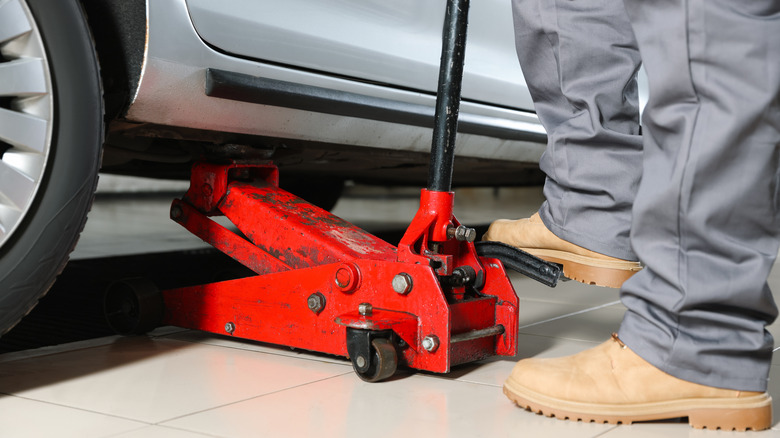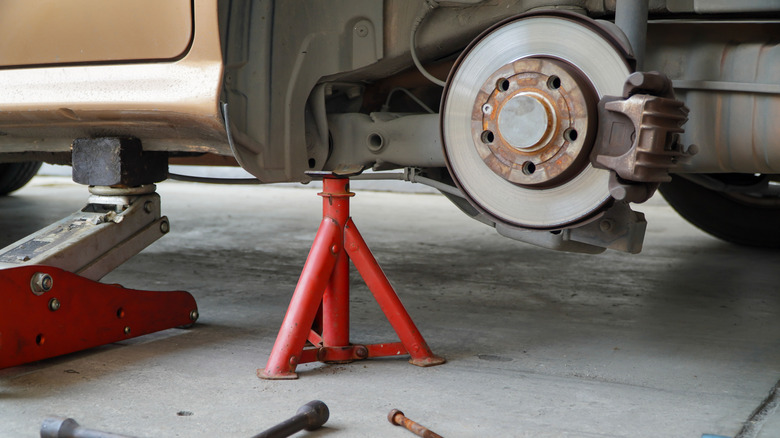What Is The 3/4 Rule When Using A Floor Jack & Why Is It Important To Follow?
The "3/4 rule" might sound like something from a math textbook, but in fact it's a very important guideline when using one of our recommended floor jacks for DIYers. It means your floor jack should be rated to lift at least 75% of your vehicle's Gross Vehicle Weight Rating (GVWR), not its curb weight. GVWR includes fuel and other fluids, cargo, and passengers, and it's printed on the label inside the driver's door and in your owner's manual. Multiply that number by 0.75 and you've got your benchmark for floor jack capacity.
This safety margin matters more than some home mechanics realize. When you jack up a vehicle near one of its axles, you're not lifting half its weight split neatly front to rear. Front ends tend to be heavier because most engines are front-mounted, and many modern cars have a transaxle in front as well. The typical weight balance of current models is around 60% in front and 40% in the rear, meaning a 2026 Toyota Corolla Cross hybrid with a 4,600 pound GVWR will put a load of 2,760 pounds on a jack under the front axle.
Following the 3/4 rule for this car limits you to jacks with a capacity of 3,450 pounds, giving you plenty of extra grunt. Anything less and you're stressing the hydraulic seals, lift arm, and pivot points and risking your safety. That's why smart mechanics usually size up well beyond the 3/4 rule. A larger floor jack gives you more piston travel, smoother lifts, and confidence when working with SUVs or electric vehicles. And remember, floor jacks are for lifting only. Once the car is up, support the frame with properly rated jack stands.
Jack profile and lift height are important as well
When shopping for a floor jack it's also important to consider its profile and lift height. The 3/4 rule only matters if your jack can fit under your car and lift it high enough for jack stands. Plenty of budget jacks can support a heavy load but can't lift a car up to a workable height. Vehicles have gotten heavier and lower over time and many of today's cars — especially high-performance models — only have a few inches of ground clearance. This means your jack needs to be low enough to slide underneath these cars and still be able to lift them 15-20 inches so you can place jack stands and make room to work. Lifting the car just high enough to get it on your stands also doesn't always mean there's enough safe space underneath for your torso, shoulders, and arms to move freely. This will make it nearly impossible to do certain jobs, and just reaching your tools becomes an ordeal.
Pushing a jack past its height limit to get another inch or two can damage its pistons and saddles, and that's how accidents happen. Cheap jack stands aren't necessarily bad ones, but again it's important to pay attention to weight rating. A 3-ton set might support 6,000 pounds per stand or per pair, and that's a tremendous difference. Most consumer sets are rated per pair, meaning the full capacity only applies when both stands are used together. Make sure you know how your jack stands are rated, and always establish at least two safe support points before getting under a two-ton car.

